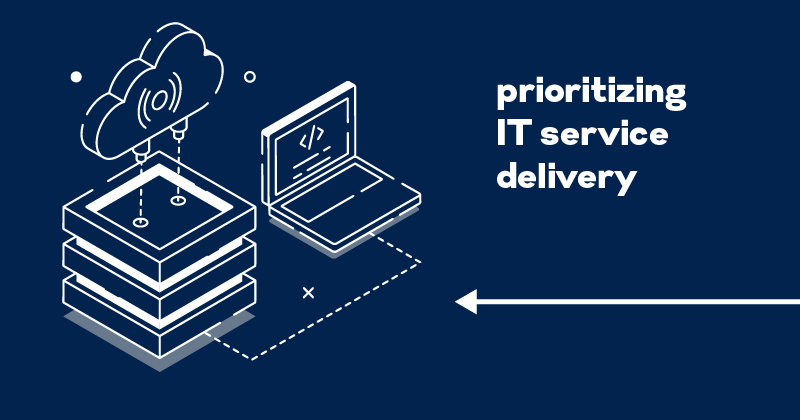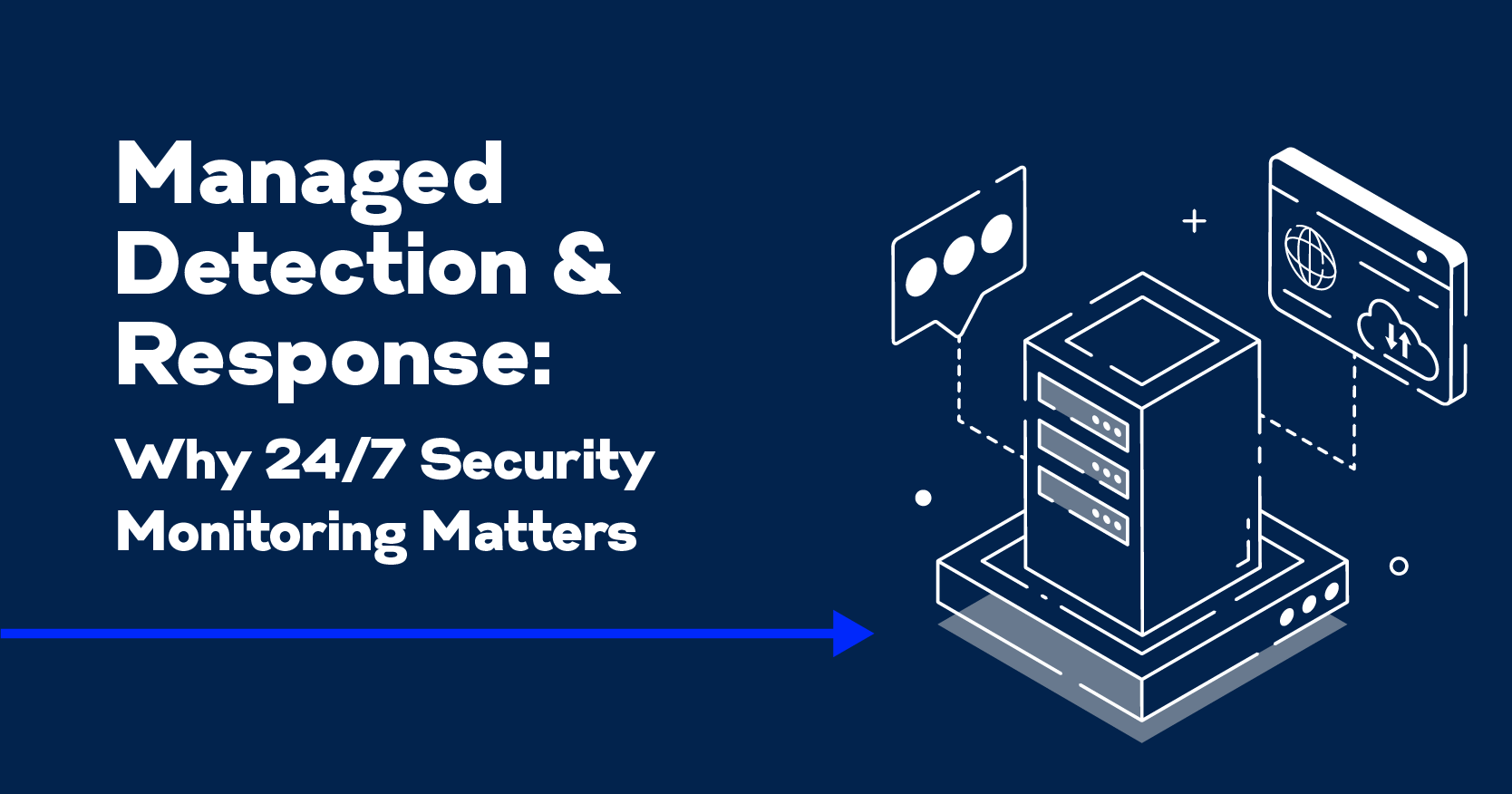Prioritizing IT Service Delivery

IT service delivery is a standard responsibility of IT teams, but there’s more to it than just providing access to technologies. How the services are delivered can also affect customer satisfaction and the ability to meet business requirements.
Time-saving, revenue-generating, profit-building technologies are — or at least have the potential to be — great. The same can be said about most of the technologies and tools integral to day-to-day business. But that’s not the case if how they’re delivered and managed doesn’t meet and/or exceed customer expectations and business requirements.
What we’re talking about is IT service delivery. In simple terms, IT service delivery is how organizations provide users with IT services, ranging from software to storage.
The following provides a brief overview of the basics of IT service delivery — and suggestions for how to place greater emphasis on it to ensure business goals are met and customer satisfaction is achieved (and maintained.)
IT Service Delivery Overview
IT service delivery covers the design, development, deployment, operation, and retirement of any technology — IT service — offered to a company’s end users. It’s typically a customer-facing endeavor, employing service level agreements (SLAs) to ensure end-users receive a guaranteed level of service. The day-to-day technical tasks of maintaining infrastructure, cloud services, software, etc., also fall under the umbrella of IT service delivery.
IT service delivery is often used interchangeably with IT service management (ITSM), but it’s actually a subset of ITSM. ITSM is the mechanism by which IT services are provided and managed. It covers IT services’ selection, design, and operation, ranging from service desk operations to request fulfillment systems. Among the main drivers of ITSM is ensuring the productivity of the IT staff and the satisfaction of the organization’s users.
IT service delivery is more specific, focusing on service quality. It emphasizes the use and monitoring of KPIs to ensure SLAs are met. Other drivers include continual service improvement and making the IT function more proactive and predictive.
The Why of IT Service Delivery
As noted previously, customer satisfaction is a key goal of IT service delivery. However, it’s also critical to help ensure a service or product meets business requirements, such as data and security controls and regulatory compliance.
In addition, IT service delivery helps maintain the desired level of overall health for an organization’s IT services. As such, it requires IT to have full-stack visibility into the entirety of the enterprise’s IT infrastructure and operations. Things like enhanced application performance monitoring and cloud infrastructure monitoring are essential tools for optimizing and improving performance, system health, and speed of service resolution.
IT Service Catalogs and Frameworks
The bigger a company gets, and the more IT services it offers and manages, the greater the need for a formal structure around IT service delivery. That’s particularly true as cloud services become more ubiquitous, and IT must provide oversight around how they are selected, implemented, and secured. That’s where the IT service delivery framework (SDF) comes into play.
SDF is a set of guidelines, standards, and procedures used to evaluate, develop, deploy, manage, and retire IT services. Most mid-size and large organizations employ an IT service catalog outlining the services available. The SDF manages the service catalog.
The SDF also defines the responsibilities of the service and help desks, provides configuration management services, and monitors the performance of all hardware, software, and services to ensure that service level agreements (SLAs) are met.
An IT Service Delivery To-Do List
Understanding what IT service delivery is and how it works is one thing. It’s another to strive for and achieve excellence in it. The following suggestions can help.
1. Use well-defined KPIs
Clearly define IT service delivery KPIs with specific, measurable benchmarks. These KPIs will help you assess the success of your IT service delivery.
Choose KPIs that reflect the critical aspects of your IT service delivery that matter to your business and stakeholders. They should be realistic and attainable within your resources and capabilities. Importantly, they should be quantifiable and verifiable with data and evidence,
Examples include customer KPIs, such as customer satisfaction scores and net promoter scores; service KPIs, such as service uptime and mean time to restore; incident KPIs, such as incident resolution time and first call resolution rate; and cost KPIs, like cost per service and return on investment.
Track and monitor your KPIs regularly to see if you’re on track to meet your performance benchmarks. Provide transparent and regular reporting on them, communicating performance trends to identify opportunities for improvement and facilitate better decision-making.
If you’re not hitting your goals, gather the necessary feedback and other information to determine why. Implement corrective action to get back on track. Revisit and reassess your benchmarks and goals, too, as changing business requirements or other factors may affect service delivery capabilities and objectives.
2. Know business needs and expectations
Take the time to learn about and understand each department or line of business’s (LOB) vision and business and IT needs — and how those needs match the organization’s overall strategic goals. Discuss a major gap between them with the relevant department or LOB representatives to ensure a clear path forward. Communication is always critical.
Also, consider each department and/or LOB’s expectations in terms of service delivery, as well as their pain points and value drivers. This enables your IT team to have better insights into what each business unit really needs and expects in terms of services and service delivery and how best to meet (even exceed) their expectations.
At a more tactical level, one thing that can help is developing an IT services portfolio that leverages various cloud services. This provides a flexible operating model that helps IT separate some (if not most) of the decision-making processes from infrastructure requirements.
Workloads can be aligned with suitable cloud models that address security, compliance, performance, and other business requirements. Departments, LOBs, and the overall organization can also benefit from the well-proven benefits of cloud services, including agility, efficiencies, cost savings, scalability, and the ability to accommodate changing and emerging technologies.
3. Employ industry best practices
No two companies are the same, so their approaches to IT service delivery won’t be either. However, there are numerous best practices that can help you prioritize IT service delivery to a greater extent — and do so more easily and with better outcomes. Among them:
- Know your customers. Know your company. Understand their needs, visions, and goals and how to address their differences.
- Develop (or refine) a structured service catalog to clearly define services and delivery methods.
- Ensure that all services delivered to end users are fully vetted, tested, and communicated to minimize the potential for complaints or misunderstandings.
- Make sure to understand any and all SLAs associated with the services offered. Are there exceptions or conditions?
- Standardize and communicate processes to ensure a consistent end-user experience with outcomes that adhere to established security policies and other business requirements. (It’s also beneficial for effective training and new IT staff onboarding.)
- Develop workflows to streamline IT operations and improve consistency and efficiency across service delivery processes. Continually revisit them to ensure they remain relevant and effective as the business landscape changes.
- Use methods like value stream mapping to pinpoint bottlenecks or inefficiencies. Implement tactics to resolve the issues and continue monitoring them.
- Collect continuous feedback and iterate. Work with IT teams and end users to continuously collect and implement feedback to improve your service delivery.
- To support the preceding three bullets, embrace continuous improvement and pursue root causes.
- Deploy tools that detect and proactively resolve issues.
- Address specific needs and adhere to a priority framework. Ensure that service priority is clearly outlined and that exact value levels are established in cooperation with the business stakeholders themselves.
- Build rails to guide service delivery within specific situations.
US Signal at Your Service
IT service delivery is a major focus at US Signal, whether in terms of the services we deliver to our customers or those we help them deliver to their customers. To learn what we do and how our services can benefit your organization, contact us .



